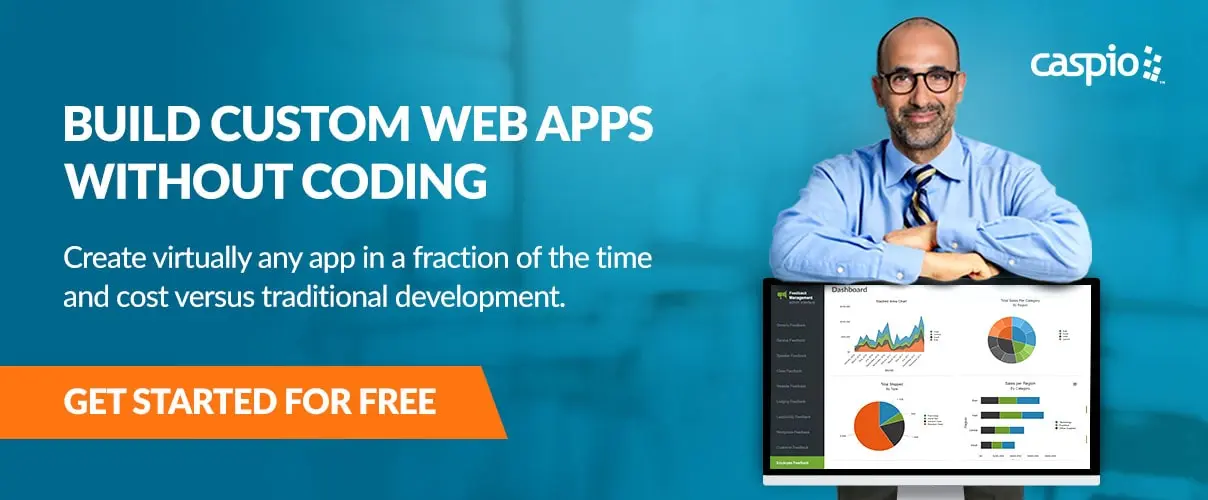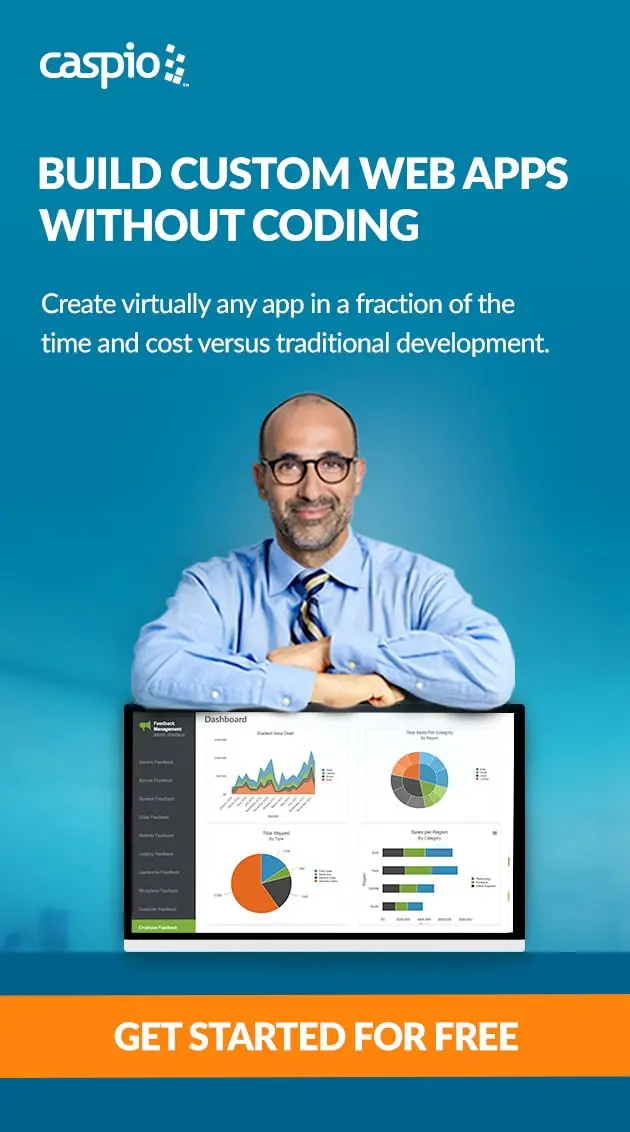Trends Affecting Enterprise IT in 2013 – Part I
January 4, 2013

Caspio CEO Frank Zamani and I were discussing what we considered to be the biggest trends around PaaS and online databases that would affect the market in the coming year. So, we decided to write ours out as blog posts – this is installment one (Frank’s  will appear on the blog soon as well). Enjoy our predictions – and if you agree, disagree, or just think we are completely off the mark – we invite you to share your thoughts in the comments section.
will appear on the blog soon as well). Enjoy our predictions – and if you agree, disagree, or just think we are completely off the mark – we invite you to share your thoughts in the comments section.
All too often, people use terms like “breakout year” to describe a trend or market sector – usually with little to back it up. But, I do feel that this year is a bit different. In the past few years we have seen the table set, as it were, for some major changes in enterprise (in every sense of the word) IT. The increasing acceptance of cloud computing and cloud-based tools, coupled with the permeation of mobile and social tools in the workplace – has forced IT to re-think how it goes about its tactical and strategic endeavors. As we enter 2013, here are a few trends or factors that I think will continue to impact how IT works:
1. Mobility is now a must-have. Look, this sounds trite and tired. But many businesses have not made a significant jump towards mobilizing the data and apps in their portfolios. Many organizations not using packaged SaaS apps are at a disadvantage when it comes to migrating into a mobile world. I expect to see IT adopting more cloud/PaaS tools to more quickly enable mobile access to data and applications/business processes in 2013.
2. “Citizen Developers” will only increase in number/impact. IT used to be a center of control, managing all aspects of employee technology with an absolute, centralized position of control. That is changing rapidly, as individual employees are now demanding to create their own solutions to pressing business needs. IT should be embracing individual development – but, with a level of control. While many modes of development proliferate, IT can curb “rogue” development by pushing standard, simple development platforms that they can support. This drives individuals to build highly functional solutions, but without data security issues becoming too widespread – and allowing IT to capture and re-use the best solutions in other departments.
3. Applications will continue to be “de-packaged.” Somewhat related to the previous point, the increasing prevalence of citizen developed apps, mobile extensions of existing legacy apps, and the demand for faster development of features/apps will continue to impact the use of traditional, packaged application systems like CRM and ERP solutions. I am in no way saying we will see the companies offering these tools suffer much, rather, these “core systems” will actually be made more valuable by extending the data in them into multi-use apps. Using a platform like Caspio, departments can take core CRM data and processes and create various short-term and long-term usage apps (such as event planning and management tools) without having to hard code or take unnecessary time to customize the core package.
4. Even more organizations will be creating highly interactive web experiences. Terms like Web 2.0 have been around a while, and web forms to capture data are nothing new. But as social media and mobile tools (as discussed in my first point) continue to become the interaction channel of choice for customers and citizens – the way we think about web sites is changing. In the business world, IT and marketing will be working together to create interactive experiences – where web visitors share content that is immediately accessed by other customers or visitors. In the public sector, user-generated content capabilities (such as a citizen uploading a photo of a pothole and geo-location data to a local government web site) will become even more commonplace.
5. The application life cycle will become more diverse. As more and more organizations use platform approaches to building online database apps, the life cycle of these apps are going to change. It is now so much easier to build a “single purpose-built application these days”- one that suits a critical and/or time sensitive need, versus lengthy customization of existing packages. Many of these apps are useful, if not absolutely necessary, to make processes seamless, insure events run smoothly, or to capture highly important time-sensitive data – but many departments do not roll these out because the core systems take too long, or cost too much to customize to this degree. Today, more user-friendly pricing and licensing of PaaS offerings makes it even more attractive to build purpose-driven apps that can be used for a few months, or even a few hours. Again, the key for IT is to empower individuals inside the organization to create these apps and other data-driven solutions, but also insure they are securely integrating with other systems, and try to control a lot of doubled efforts among departments. We will see them accomplish this more in 2013 by using a central, simple-to-use PaaS platform like Caspio, thanks to the ease-of-use, but also the ability for IT to centrally manage many accounts from a single console.
Now again, a lot of these trends are not “new”- but rather I feel these will become more of an issue but also create more opportunities for IT in 2013 than ever before. Simply put, we are changing the way we work thanks to major changes in technology. We as workers are demanding to be better connected, access more data, and create solutions to business issues on our own terms. IT is being forced to adjust, and while many of these issues have impacted IT in recent memory – 2013 could be the year where all of these somewhat intertwining issues come to a head. The key for IT managers is to leverage cloud, mobile and data management solutions that offer the most reward for the least amount of cost, complexity and maintenance.













